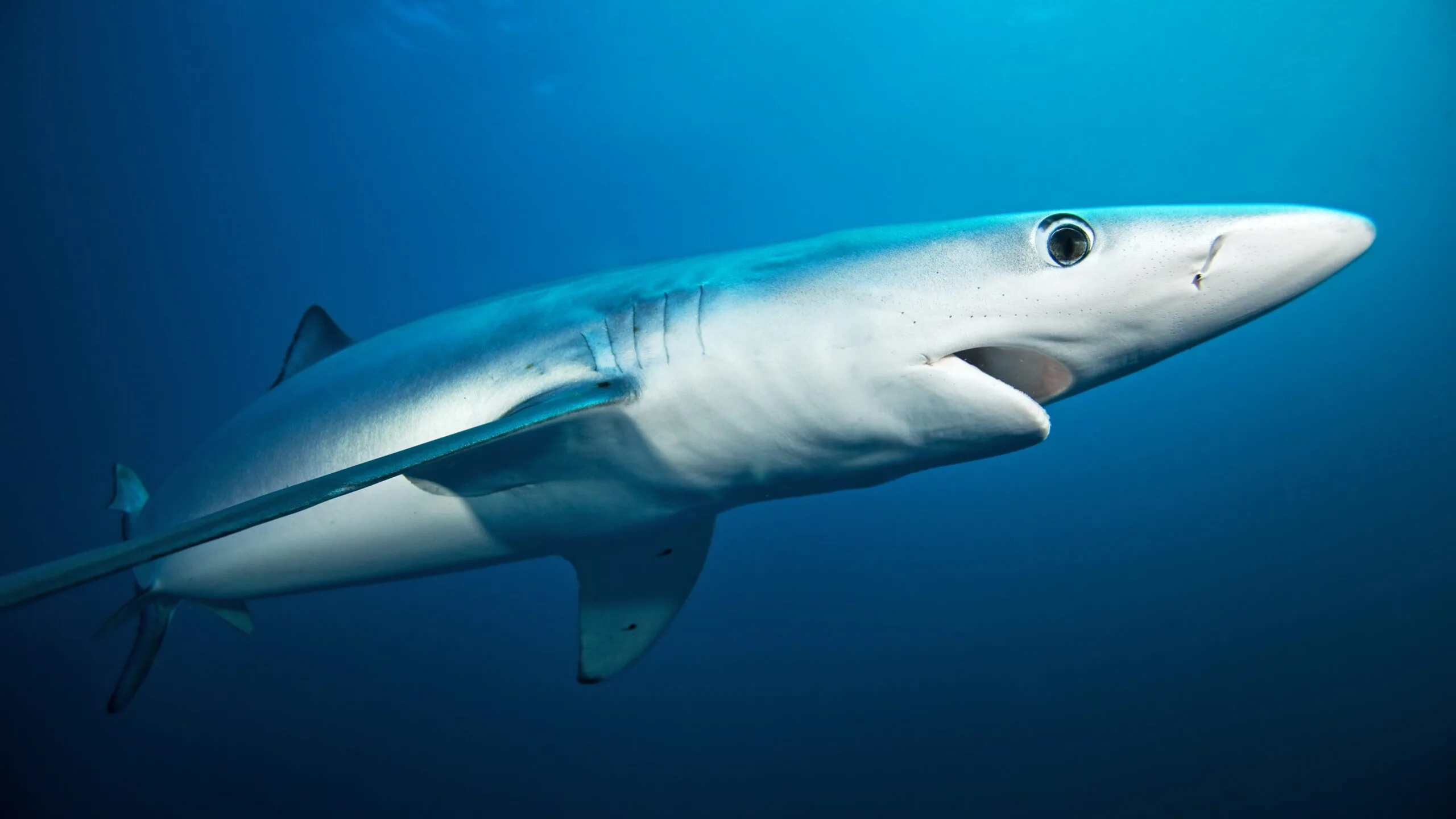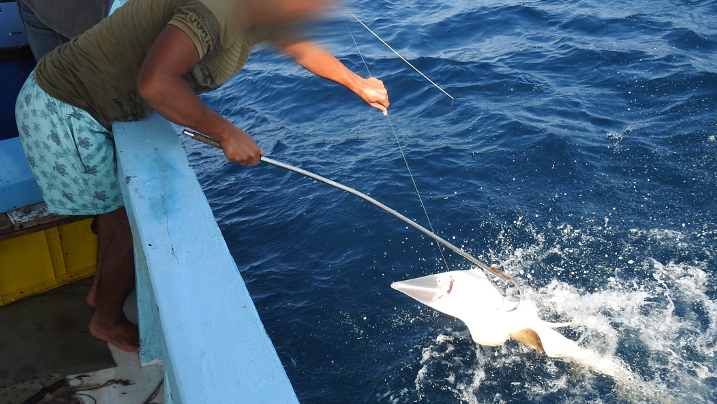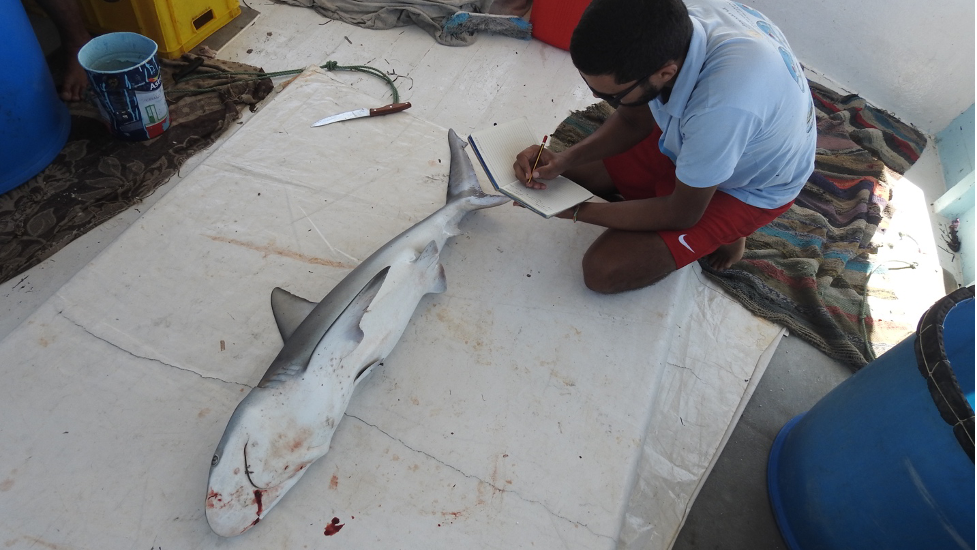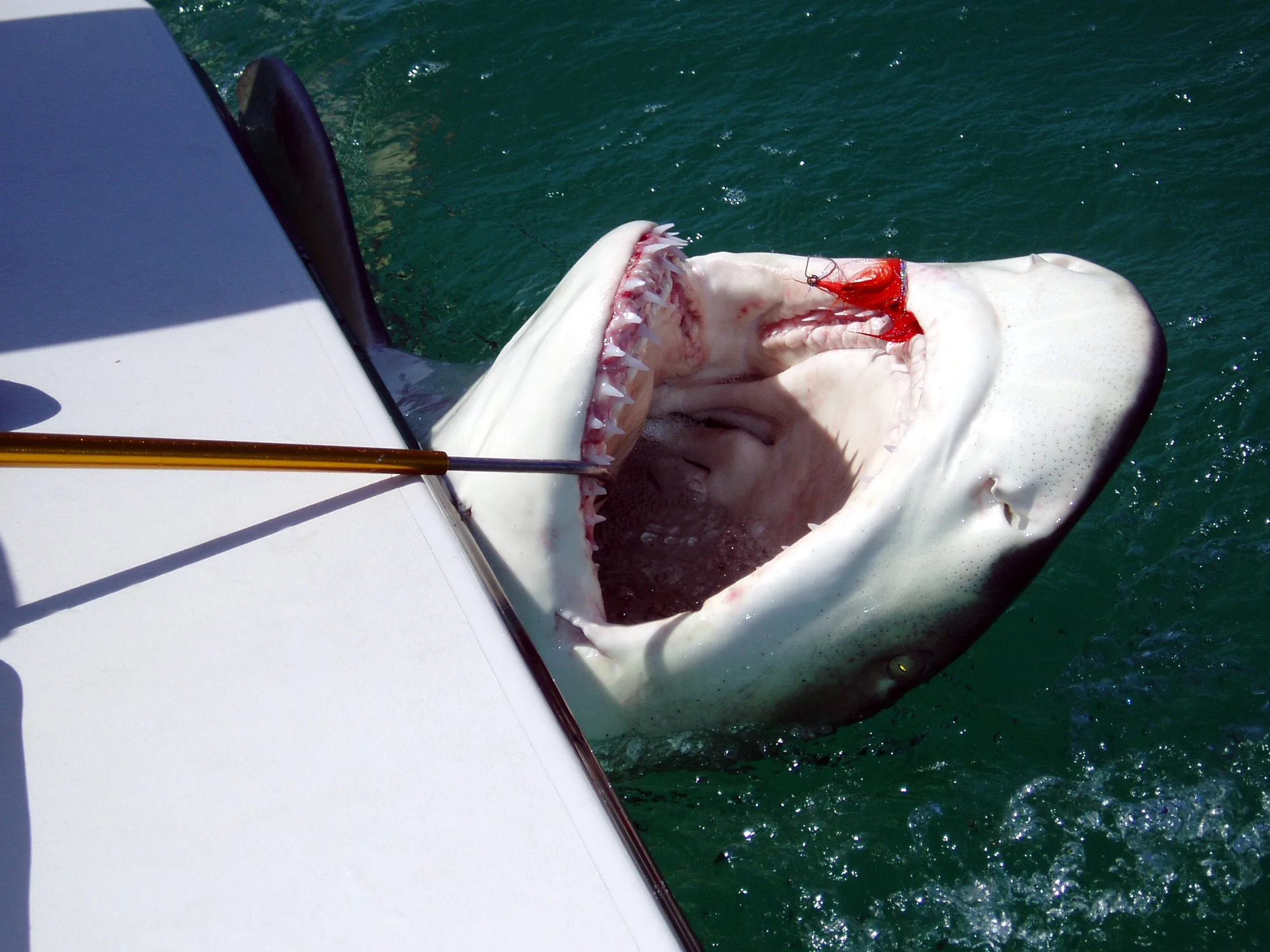For decades, sharks have been portrayed as bloodthirsty beasts, lurking beneath the water and waiting to attack unsuspecting swimmers. From the blockbuster hit « JAWS » to more recent films like « MEG » and « the reef, » sharks have been typecast as villains in popular culture. But the truth is far from this one-dimensional portrayal, especially when you consider that more people are killed by accidents involving vending machines at beaches every year, than by actual shark attacks.
In reality, the real victims in this story are the sharks themselves. These creatures have roamed the seas for over 400 million years, predating even the dinosaurs. Yet, in recent years, their populations have been dwindling at an alarming rate, due to overfishing. Sharks are no longer the top predators of the sea, humans are! While scientists have long warned of the dangers of overfishing and the devastating impact of climate change on shark habitats, the situation remains dire. Despite the importance of preserving these creatures, finding a solution that balances the demand for shark fins and shark meat with the survival of an endangered species remains a significant challenge.
Join us on a journey to the heart of the Medenine province in the southeast of Tunisia where sharks and rays (commonly referred to as elasmobranchs), rule the waves. Our mission? To uncover the truth behind the current situation of these creatures in Tunisian waters.
Zarzis, February 2023
Fishing of Houch in Zarzis: A Cultural and Economic Staple for Local Sailors
Salim Khouildi, a fisherman from Zarzis explains why he went into sharks and rays fishing “My father teached me how I catch sharks and rays, even though my uncle teaches me a bit about coastal fishing, but I didn’t focus on it, so I found myself at ease and fascinated by « Housh » fishing”.

The Zarzisian fisherman, who began fishing when he was just 14 years old, uses the word « Houch » which means « beasts, » to describe several species of sharks and rays such as guitar ray, grey shark, eagle ray, shortfin mako, blue shark…it’s a term used locally by fishermen. Shark fishing appears to be quite profitable for fishermen on various levels.

According to Salim, during each fishing trip, he catches more than 30 sharks, totaling 1500 kg, while catching 2500 kg of various species of rays. shark and ray fishing campaigns tend to take place from March to the end of October, during which thousands of tons of these species are caught each year. Due to difficulties in identifying protected species, fishermen wittingly or unwittingly end up trading in protected shark species, such as Shortfin Mako, white sharks, or devil rays. The fishermen tend to justify their high catch with the fact that their financial situation is tough and the high price of fishing equipment (nets and fuel).
Shark and ray fishing is, of course, more valuable than other methods of fishing, such as cuttlefish fishing. A day’s work with sharks pays 12,000 TND, whereas four days of work with cuttlefish pays only 2,000 TND.
S.Khouildi
But sharks are vulnerable to overfishing, due to their slow growth rates, late maturity, and low fecundity. In these animals, overexploitation can occur even with low levels of fishing mortality.
According to the International Union for Conservation of Nature (IUCN), around one-third of all shark species are threatened with extinction. Tunisia is home to 63 elasmobranch species, including 37 shark species, such as the blue shark, shorten mako, grey shark, and 26 ray species. Although there is no conclusive data on shark numbers in Tunisian seas due to underreporting of catch, their populations are declining. Tunisia has become the second largest fishing country for sharks in the Mediterranean after Libya, according to a report issued by the World Wildlife Fund (WWF) in 2019.
Tunisia’s Most Caught Species
In Zarzis, the most commonly caught sea creatures are the gray shark, common guitarfish, and common stingray. However, according to Salim’s recent observations, these majestic elasmobranchs are rapidly disappearing from Tunisian seas. The quantity of these creatures has plummeted by up to 80%, and some species, such as the northern stingray, have nearly vanished altogether.

Previously, we worked with 30 shark nets and caught 3 tons, but now we use 160 shark nets and catch a maximum of 1.5 tons of elasmobranchs.
S.Khouildi
The precarious state of shark and ray populations in the Mediterranean is a growing concern for environmentalists across the globe.
With several species of these creatures now classified as endangered or critically endangered, urgent action is needed to protect them from the brink of extinction. Among the Mediterranean’s protected species are the majestic Giant Devil Rays, two types of Guitarfishes, and Spiny Butterfly Rays. Sadly, all of these species are in danger of disappearing forever, and time is running out to save them.

But it’s not just these protected species that are at risk. The common guitarfish, gray shark, and common stingray are also facing a perilous situation. These once-abundant creatures are now struggling to survive in the face of relentless overfishing and habitat destruction.
Angel sharks, which were once abundant in Tunisian waters, are now a rarity. Dr. Bachir Saidi, a shark researcher with the National Institute of Marine Sciences and Technologies (INSTM) and a prominent marine biologist, stated, « Two species of angel sharks used to exist in Tunisian seas, but their numbers have been decreasing to the point of extinction since the 1980s. »

It should be mentioned that these species are classed as critically endangered in the Mediterranean by the IUCN.
Dr B.Saidi
The white shark (Carcharodon carcharias), one of the most awe-inspiring predators in the ocean, is also in grave danger. According to the International Union for Conservation of Nature (IUCN), the Mediterranean population of white sharks is classified as « Endangered, » with populations declining due to overfishing, accidental catches in fisheries, and other human impacts.

Despite this alarming trend, the white shark is still being caught in Tunisian waters, despite their capture is strictly prohibited worldwide. Furthermore, great white nurseries are known to exist in Tunisian waters. Salim has encountered these magnificent creatures, saying, « During my career, I caught three white sharks, the largest of which weighed over 650 kg. It was extremely huge. »
Although it is possible that these animals were caught accidentally, it is intended that fishers release them alive, especially that catching white sharks is prohibited worldwide.
The “Garracia”: a specific Tunisian net for catching sharks and rays
Sharks and rays are not only being fished but are also being unintentionally caught as bycatch in Tunisian waters. This practice occurs when fishing vessels deploy trawl nets, trammel nets, longlines, purse seine, and other fishing gear. The sharks get caught whilst fishermen are fishing for other species.
Furthermore, the bycatch situation is also alarming. During the summer, a tiny artisanal fishing community on the country’s southern coast specifically targets two elasmobranch species: the sandbar shark and the smoothhound. This fishing community employs specialized gill nets known as « Garracia » and « Gattatia, » designed explicitly for this type of fishing. « Gattatia » and « Garracia » are monofilament polyamide gillnets, with stretched mesh sizes of 120-160 mm and 300-400 mm, respectively. These nets are utilized at depths ranging from 5 to 30 meters.
In some areas in Tunisia, fishermen use specific nets to catch baby sharks, some with their umbilical rope. It is so sad.
S.Khouildi
The « Garracia » fishing net has an interesting history. It was first handcrafted before being factory-made in the 1960s. Local fisherman Salim, remembers his father spending the whole winter producing the « Garracia » for use during the summer fishing season. Today, ten boats specialize in using the « Garracia » and twenty boats that utilize longlines to fish for elasmobranchs in deep waters.

The artisanal fishing communities specifically target the sandbar shark and the smoothhound with specialized fishing gear. With shark populations declining in the Med Sea, there’s a need for the government to revise and update legislation related to elasmobranchs, and enforce sustainable fishing practices to reduce the bycatch caused by commercial fishing activities. It’s time to strike a balance between economic development and environmental conservation.
Surviving in the shadow of the Megalodon: Can today’s sharks and rays endure?
A binding Recommendation adopted by the General Fisheries Commission of the Mediterranean, of which Tunisia is a party, prohibits the retention transshipment, landing, transfer, storage, sale or display, or offer for sale of 24 elasmobranchs listed on Annex II of the Barcelona Convention, including all three species of angel sharks. Sharks are often targeted for their fins, meat, and other body parts, leading to overfishing and population declines. This has resulted in a significant decrease in the number of these magnificent creatures, which play a vital role in maintaining the balance of marine ecosystems.
In addition to this, sharks are also frequently caught accidentally in fishing gear intended for other species, resulting in injury or death. The practice of shark finning and the trade in shark fins to Asia have contributed to their decline.
The warming and acidification of oceans due to climate change may further impact the distribution and abundance of prey species, which can have far-reaching effects on shark populations. Dr. B. Saidi attributes the decline of elasmobranchs in Tunisia to the intense activity of illegal fishing ( read our article about illegal fishing in Tunisia ) of these species, particularly in the Gulf of Gabes, which serves as a feeding and reproduction area.
Immediate action is required to protect these animals and safeguard their habitats. Tunisia must take proactive measures to protect the elasmobranch species, such as enforcing stricter regulations on fishing practices and controlling the illegal trade of these animals. It is essential to preserve these magnificent creatures and maintain the delicate balance of our marine ecosystems.
Dr. B.Saidi
The Dark Side of Shark Meat: Myths and Misconceptions
Shark and ray meat and body parts are commonly traded and consumed in many parts of the world, including Tunisia, where they are used in a variety of traditional dishes. When illegally traded to Sicily, they are sold as swordfish, according to an article in the Guardian newspaper. However, experts warn that consuming these creatures may be harmful to human health due to high levels of heavy metals such as mercury and lead that accumulates in their bodies over time.
According to Dr. B.Saidi, elasmobranchs are top predators and therefore are more susceptible to accumulating these toxic substances in their bodies. Heavy metal poisoning can lead to a range of health issues such as brain damage, kidney damage, and developmental problems in children. Additionally, elasmobranchs may contain high amounts of urea and trimethylamine oxide (TMAO), which give the meat an ammonia-like taste and odor and can trigger allergic reactions in some individuals.
Despite these health concerns, elasmobranch meat remains popular in Tunisian cuisine, with some falsely believing that it can cure incurable diseases. Fishermen such as Salim, who have witnessed the decline of elasmobranch populations, still support the consumption of their flesh, citing personal accounts of individuals who have eaten shark and ray meat and recovered from illness.
Breaking the Law: Sharks and Rays Continue to be Targeted Despite Protections
Despite the risk of overfishing and the dangers linked to consuming sharks, Tunisian fishermen like Salim refuse to believe the evidence and continue to target, sell and consume these creatures.
According to a 2019 World Wildlife Fund report, at least 20 percent of sharks and rays caught in Tunisia are not done accidentally, but illegally. However, domestic legislation on sharks has not yet included all of the provisions from the GFCM Recommendations that banned shark species. Several international laws and conventions are in place to protect elasmobranchs in the Mediterranean, including the Barcelona Convention for the Protection of the Mediterranean Sea and its Protocols, as well as national rules and regulations that enforce fishing bans, size limits, and catch quotas as stipulated by regional fisheries organizations.
In Tunisia, the lack of state enforcement and awareness among fishermen makes it difficult to enforce these regional regulations, especially as many have not been transposed to domestic legislation.
Some fishermen like Salim are proactively suggesting alternative solutions such as reducing fishing periods, using only one type of net to catch only adult elasmobranchs and leaving juveniles, and managing fishermen through quotas that should not be exceeded in each season.
Dr. B.Saidi, affirms that the country has ratified international conventions that prohibit the fishing of 24 elasmobranch species, and Tunisia has begun to prepare an action plan for Angel shark conservation that will be completed in 2024. The plan is based on the Mediterranean Action Plan for the Protection of Angelshark, created in 2019. Tunisian conservation efforts have included the creation of marine protected zones and the promotion of sustainable fishing practices, yet further efforts are needed to study and conserve these populations in Tunisian seas, as well as to improve the expertise of those who have chosen the profession of elasmobranch fishing.
In conclusion, the conservation of elasmobranchs in Tunisia is a critical issue that requires more attention and action. While sharks and rays play an important role in maintaining healthy marine ecosystems, their overfishing has severe consequences for both human health and the environment. It is necessary to increase the training and awareness of fishermen and inspectors on protected species. Tunisian authorities, conservationists, and fishermen must work together to promote sustainable fishing practices and raise awareness about the importance of protecting these vital species.
This article was developed in collaboration with the Earth Journalism Media Mediterranean Initiative project.
Sources:
- https://gfcmsitestorage.blob.core.windows.net/website/Decisions/GFCM_Compendium_2022-f.pdf
- https://www.fao.org/3/ca4047fr/ca4047fr.pdf
- PROTOCOLE CONCERNANT LES AIRES SPECIALEMENT PROTEGEES ET LA DIVERSITE BIOLOGIQUE EN MEDITERRANEE ANNEXE II LISTE DES ESPECES EN DANGER OU MENACEES
- Elasmobranchs in Tunisia: Status, Ecology, and Biology Samira Enajjar, Bechir Saidi and Mohamed Nejmeddine Bradai.
- Heavy metal concentrations in edible muscle of whitecheek shark, Carcharhinus dussumieri (elasmobranchii, chondrichthyes) from the Persian Gulf: A food safety issue
- Mediterranean Angel Shark: Regional Action Plan : Published by The Shark Trust 4 Creykes Court The Millfields Plymouth PL1 3JB, Uk Registered Charity No. 1064185. Registered Company No. 3396164 7- Understanding the role of ecological factors affecting mercury concentrations in the blue shark (Prionace glauca) : Lola Riesgo a, b, Carola Sanpera b, Salvador García-Barcelona c, Mois`es Sa ́nchez-Fortún b, Marta Coll a, Joan Navarro
Copyright © 2022 Blue Tunisia. All rights reserved




